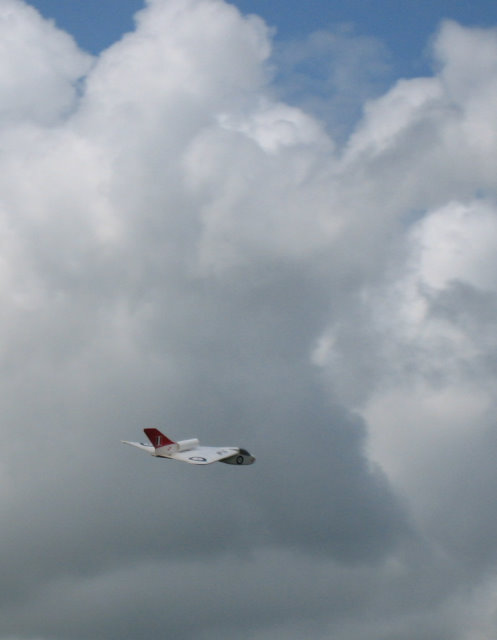|
|
|||||||||||||
|
Christchurch and District Model Flying Club |
|
HP 115 Slender Delta seen flying over Wiltshire
Reported by Martyn Pressnell Reports have been received of a slender delta aircraft remarkably similar to the HP115 airborne over the hills of northern Wiltshire. The first report relates to a sighting on Friday 17 April 09 over the White Horse at Uffington just north of Lambourn. The day was very misty apparently and the aircraft raced across the bowl in the hills banking hard left. The aircraft itself appeared to be white in colour and of very slender planform, only the RAF roundels remained visible finally as the machine vanished into the cloud base.
The second sighting was on Friday 2 June 09, from the White Sheet Hills of Wiltshire, above the country town of Mere. This was a clear day and several passes of the machine were observed low over the horizon and along the valley. This was very exciting, apparently several witnesses stood spellbound as the machine streaked past, its passage seemed very quiet. Several fleeting photographs proved possible, I am pleased to have secured one for the Handley Page Association. The third and final sighting occurred at the same location in a more westerly direction, on Friday 21 August 09 when the machine was seen to be climbing fairly fast, definitely under power. The noise was considerable and sustained as the machine made two passes before entering the remarkable lateral oscillation mode, that slender deltas are said to exhibit. It dived away vanishing below the hill line. In each of these sightings the unusual under slung nose of the HP115 was seen and the power unit seemed to be in the same dorsal position above the wing and ahead of a highly swept fin. This can be seen in the photograph below.
All of this required following up and I am bound to say the whole thing took on a rather secretive and problematic investigation. The design office of MSP Aviation was traced to Lymington on the delightful south coast, close to the New Forest. On admission to the small premises I was able to speak with the chief engineer, who confirmed that the HP115 had been very influential in the design process. In fact the project is known coincidentally as the MP115. The prototype aircraft which was the subject of these sightings was initially catapult launched as a glider, not unlike the original intention with the HP115 which was to be towed aloft by a Canberra Bomber and released as a pure glider. These tests had been successful, demonstrating a very satisfactory level of control, although the elevon control surfaces, giving either pitch or roll motion, were found too fierce. A temporary reduction in movement gearing had been introduced. The aircraft had a very low wing loading because the wing area had been increased in comparison to the original, by reducing the leading edge sweep to 60 degrees. The position of the cockpit low down and the motor mounting on top were precisely as the original HP115. The prototype machine had been assembled in very cramped quarters in the facility at Lymington. It seemed to resemble in this respect the Carpenter’s Shop at Cricklewood where the HP115 airframe had been assembled. I was told that our Mr Harry Fraser-Mitchell of the HP Association had made some important input to the aerodynamics of the design and I learned that Mr Jeff Hawkins, formerly of the Test House in Park Street had set up a facility to produce cockpits and propulsion ducts in Tewkesbury, Gloucestershire. Most extraordinarily the power unit installed was imported by the Fanfare Company of Whitstable in Kent. These Microfan units are electrically driven using the latest three-phase motors and powerful lithium polymer batteries. The lateral oscillation exhibited by the machine was of a much higher frequency than the HP115 developed and proved beyond reasonable control by the pilot. However he had managed to land the aircraft with minor damage to the airframe after this frightening experience. This has had the effect of bringing forward the first production model of the MP115 which I was allowed briefly to see under construction. Components finished in silver colour were on display in the workshop area. In the drawing office I was permitted to see new drawings of the modified control system with reduced size elevons and more comfortable cockpit area. The production machines will be fitted with a fixed undercarriage for further evaluation and then a dolly to drop-off after taking off. It seems to resemble the early German jet practice. The whole purpose of the project is to provide a cheap and affordable fighter development for the RAF and European interests, which seems to be a very appropriate approach to the new economic era faced by this Country. Our very best wishes to the MP115. Comparison of Dimensions
HP115 MP115
|
|
[Home] [Chairman's Chatter] [Editorial] [Diary of a Flier] [HP or MP?] [Christmas] [Cincopelli] [Brian's Blizzard] [Chuckie] [C&F 2009] |


